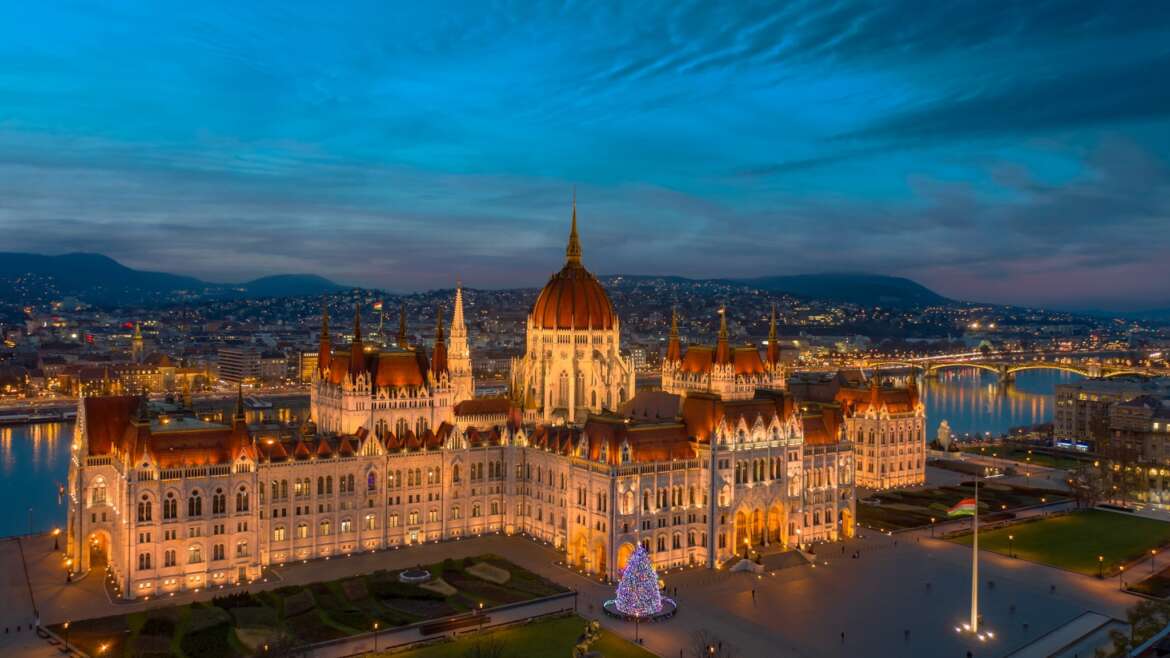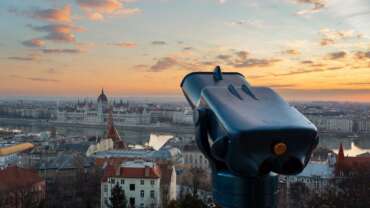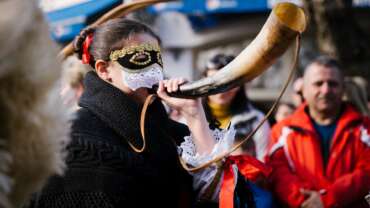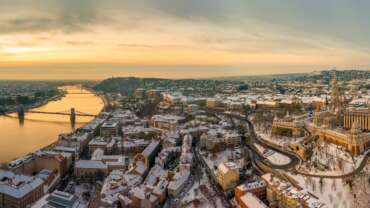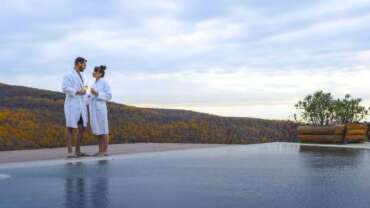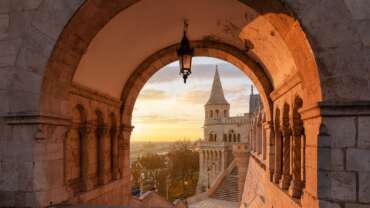UNESCO World Heritage in Hungary
Featuring the Taj Mahal and the Grand Canyon, the UNESCO World Heritage list divides sites into those of outstanding cultural and those of outstanding natural value.
The UNESCO World Heritage Programme in brief
UNESCO (the United Nations Educational, Scientific and Cultural Organisation) World Heritage Programme was established in 1972. The aim of the programme is to register the cultural and natural heritage of humanity – so the countries that are placed on this list must make a commitment to protecting the World Heritage sites in their territory so that later generations can enjoy their unparalleled beauty. Needless to say, being included on the World Heritage List is immensely prestigious – places such as the Grand Canyon National Park, the historic centre of Florence, Machu Picchu and the Great Wall of China are all listed.
Most of them sits in the cultural category. BUDAPEST counts as one, with three specific attractions: the DANUBE PANORAMA, the CASTLE DISTRICT and Andrássy Avenue.
The first refers to both banks, the bridges linking them and the landmarks along them. Certain attractions are cited by name, including the magnificent Neo-Gothic PARLIAMENT and Art Nouveau masterpiece, the Gresham Palace, defining the skyline of Pest, and dramatic hilltop CITADELLA in Buda.
A seat of power since the 1200s, Castle District exudes history, the sprawling former royal palace now housing the HUNGARIAN NATIONAL GALLERY. Nearby, MATTHIAS CHURCH and FISHERMEN’S BASTION were painstakingly created by architect Frigyes Schulek in the late 1800s, the former from medieval plans. Andrássy Avenue is more broadly defined to bring in THE GREAT SYNAGOGUE, with the ornate OPERA HOUSE and magnificently restored Franz Liszt Academy of Music among the landmarks.
In western Hungary, PANNONHALMA ABBEY, founded in 996, still functions as a centre of church and art history, with an arboretum and herb garden, cloisters, an archabbey museum, a gallery and chapel.
In north-east Hungary, designated as a wine region since 1737, TOKAJ’s storied viticulture is another heritage site, 3,000 cellars stretched across an area of eight settlements including Mád and Tokaj itself.
The nearby HORTOBÁGY NATIONAL PARK shows how man and nature can interact in harmony, animal husbandry adapted to the saline pastures and wetlands. In spring and autumn, this habitat attracts breeding and migrating birdlife. Hortobágy is also symbolised by THE NINE-HOLE BRIDGE AND WILDLIFE PARK.
Closer to Budapest, HOLLÓKŐ Ófalu refers to the Old Village, the medieval castle ruins above and the surrounding greenery. This complex of folk architecture comprises 55 buildings and a church.
The FERTŐ LAKE area features a unique landscape of vineyards and diverse wildlife, geologically and historically uniform either side of the Austrian border that now divides it.
Roman Sopianae is today Pécs in southern Hungary, where an Early Christian Necropolis from the fourth century is part of THE CELLA SEPTICHORA VISITOR CENTRE, a popular tourist attraction.
The 1,200 caverns of AGGTELEK straddling the Slovak border include the 26-kilometre Baradla-Domica cave system and Rákóczi Cave No.1, used in the treatment of respiratory illnesses.
Old Village of Hollókő and its surroundings
Hollókő in Nógrád County in Northern Hungary has been a UNESCO World Heritage site. This small village is sought out by tourists from all over the world, as this is currently the only Hungarian settlement whose residents still use the built environment as they did in the past century.
Hollókő is a one-street village, meaning that most houses have their entrances from the main street, with long gardens stretching on to the hills at the back. Even if the furnishings and equipment of turn-of-the-century homes have been modernised somewhat, the original rooms and outbuildings have remained, fulfilling their initial functions to this day.
The legend of village
The story of Hollókő began in the 13th century, when the castle towering above the village was constructed following the Tatar invasion. The first written record of the village itself dates back to the 14th century – telling us that Hollókő already had a church at the time. A romantic legend is also attached to the castle that people still consider to be true, although the castle of Hollókő was in reality most likely built as part of the wave of stone-castle construction across the country following the Mongol invasion. According to the legend, the lord building the castle kidnapped the beautiful wife of the neighbouring squire. However, the girl’s nanny was a witch and was on good terms with the devil, convincing him to turn his sons into ravens, who then stole the stones from the new castle until the woman was finally set free. The stolen stones were then used to build a new castle, which is why the medieval fort was given the name Hollókő, which stands for Ravenstone.
The archetype of Palócz architecture
The village was depopulated during the Turkish occupation, and settled by Palócz petty nobility from Upper Hungary (Felvidék), a fact we also know from medieval documents. The agricultural and natural characteristics of the region did not allow for settlers to live prosperously, on top of which the Palócz social structure is also decidedly ancient, not facilitating social mobility and modernisation. Hollókő, already a town difficult to access, started to lag behind other regions in terms of development over the centuries.
Traditional Palócz architecture made use of wood and straw and, as a result, the village was ravaged by fire on numerous occasions over time. The last and most severe of these fires dates back to 1909 and, in the reconstruction of the village, the residents switched from wood to mud-bricks and from thatched to tiled roofs, building the houses on a stone base. However, the buildings retain traditional Palócz folk architectural forms, meaning that the ‘new’ old village completed in 1911 was a perfect imprint of the atmosphere of the beginning of the century and of traditional Palócz architecture as well.
The living folk culture
When visiting Hollókő, these unique architectural marvels are not the only things to be amazed at: if we arrive at the right time, we may also gain insight into how people in Hungarian villages lived at the onset of the 20th century. As a result of urbanisation, Hungarian ethnic groups in general started to leave behind the folk costumes typical of their region at the end of the 19th century and the beginning of the 20th century. For the Palócz, and in Hollókő in particular, this process only started in the 1960s and then only very gradually. Typically, village residents wouldn’t go to work in larger towns and cities, meaning that they voluntarily preserved their ancient culture. Of course, the village has paved roads, electricity and Internet, but the current 400 mostly pension-age residents still observe their traditions, be they gastronomy, religion or folk art. On the occasion of festivities, for example at Easter, which they consider to be particularly important, even the few young people dress in traditional Palócz attire.
Given its spectacular natural surroundings, Hollókő is ideal for a one-day hike at any time of the year.
Budapest, you’re wonderful – World Heritage sites in the capital of Hungary
Walking in Budapest, we come across impressive buildings and eye-catching spaces. UNESCO has also recognised the city’s beauty: we showcase its World Heritage sites.
Eight natural and cultural assets in Hungary are now included on the list; in the capital, the view of the Banks of the Danube with the Buda Castle District and Andrássy Avenue are World Heritage Sites.
Head to Budapest, your destination: World Heritage Sites
The Hungarian capital is becoming increasingly popular with tourists. What’s more, Budapest has become such a trendy tourist destination that in 2019, it won the prestigious European Best Destination award. That is no coincidence, since the city promises many a wonderful sight: all you have to do is step out into the street, and wherever you look you’ll see a fabulous view on both the Buda and Pest sides of the river.
The first Budapest sight to be included on the UNESCO World Heritage List in 1987 was the view of the Banks of the Danube and THE BUDA CASTLE District. This was joined in 2002 by Andrássy Avenue and its historic surroundings.
The Banks of the Danube
There can be no doubt that the Banks of the Danube in Budapest offer a splendid view, with the iconic bridges crossing the river. The World Heritage Site extends from Margaret Bridge to Liberty Bridge and, on the Buda side, includes the historic complex of the castle district, Gellért Hill with THE STATUE OF LIBERTY AND THE CITADEl, and the popular GELLÉRT BATH. As part of the heritage, the most characteristic buildings on the Pest side of the riverbank include the eclectic and captivating PARLIAMENT, the Neo-Renaissance headquarters of the Hungarian Academy of Sciences, the Art Nouveau masterpiece of the Gresham Palace and the Pest Vigadó.
The Buda Castle District
The Buda Castle District is worth a special mention, since with its many sights, this destination alone is worth a full day. Once in the centre of the quarter, surrounded by the castle wall, take a look at the 19th-century Neo-Gothic-style MATTHIAS CHURCH and the Neo-Romanesque FISHERMAN’S BASTION; and don’t miss walking through Buda Castle, once home to kings and today housing the National Széchenyi Library, THE NATIONAL GALLERY and the Budapest History Museum. If we were you, we’d also check out the Várkert Bazár, known as the capital’s special jewellery box, where art and nature live together symbiotically. Check out the exhibits here, enjoy a phenomenal dinner or simply admire the magical panorama.
Andrássy Avenue
Andrássy Avenue has also been included on the UNESCO World Heritage List with its magnificent buildings, such as the Opera House designed by the rightly famous architect Miklós Ybl, the Neo-Renaissance Academy of Music or the Art Nouveau Divatcsarnok (Fashion Hall) department store; but it also includes magnificent HŐSÖK TERE (Heroes’ Square) at the end of Andrássy Avenue, flanked by THE MUSEUM OF FINE ARTS and the Kunsthalle and with the Millennium Monument, where the complete history of Hungary is on display through large-scale works. If you want to enhance your time travel, we recommend a ride on Europe’s first underground railway, handed over by Emperor Franz Joseph in 1896 and gliding under Andrássy Avenue to this day.
No wonder you’re already grabbing your shoes after reading the above to immerse yourself in the beauties of Budapest, but if time allows, be sure to visit the other World Heritage Sites in the country, which are:
– the traditional Palóc Village of Hollókő,
– the contiguous cave system of Aggtelek Karst and Slovak Karst,
– the Benedictine Abbey of Pannonhalma and its Natural Environment,
– the Hortobágy National Park,
– the early Christian Necropolis of Pécs,
– the Fertő Cultural Landscape,
– the Tokaj Wine Region.
Aggtelek Karst and Slovak Karst caves
The cave system, located 236 kilometres from Budapest and crossing the Hungarian-Slovak border, is a uniquely spectacular region of Northern Hungary that has been on the UNESCO World Heritage List since 1995.
The Aggtelek National Park occupies over 20,000 hectares on the Aggtelek Karst, the part of the Gömör–Torna Karst located in Hungary. Roughly 1,200 caverns have been discovered in the area of the Gömör–Torna Karst, of which 273 are in Hungary, within the borders of the Aggtelek National Park. The most famous of these are probably the Baradla-Domica Caverns.
Adventure in ancient times
The longest cave in Hungary and in the temperate zone is the Baradla Cavern, which winds for 25 kilometres, while the 5.6 kilometre part running under Slovakia goes by the name of Domica. Geological data put the beginning of the formation of the cave system at about two million years ago. The water of the streams dug, abraded and dissolved the cavities and caverns and then the lime deposit of the dripping water slowly built the stalactites of varying shapes that fascinate visitors to this day. Like today’s visitors, their shapes inspired the imagination of the explorers who discovered them, which is how they got expressive names like Dragonhead, Tiger, Mother-in-Law’s Tongue, Columned Chamber or Giants’ Hall. The Concert Hall, with its excellent acoustics and stunning spectacles, hosts classical and popular music concerts to this day.
The archaeological finds in the Baradla Cavern and other neighbouring caverns are telling of the fact that these caves were used as a refuge as far back as prehistoric times. Archaeologists have unearthed gold jewellery and fighting equipment from the early Iron Age, as well as tools and earthenware made of stone and animal bone from the New Stone Age, which was 6-7,000 years ago. The cave system includes several other caverns open to the public, such as the Imre Vass Cave, known for its Orange Torrent, the Peace Cave, providing relief to those suffering from respiratory diseases, or the Rákóczi Cave, known for its fabulous underwater lakes. There is also a cave formed by the waters breaking up from the depths and a vertical shaft cave, also known as a sinkhole, carved out by seeping water. One example is the Vecsembükk shaft cave.
Special wildlife
The caves form a unique ecosystem, with the almost sterile air hidden under the surface in the World Heritage Site providing a home for more than 500 cave-dwelling and cave-loving animal species, many of which can only be found here. Guided cave tours of 2.5 or even seven hours leave from Aggtelek or Jósvafő. Near the caverns, there are also marked hiking trails at ground level. Following these will offer you the chance to get to know the flora and fauna of the karst surface, but also get a glimpse into the life of nearby villages and see the hidden, ancient church ruins. A yellow path indicates the 7-kilometer Baradla Educational Trail between Aggtelek and Jósvafő, which can be completed in about three hours, while the Tohonya-Kuriszlán Educational Trail around Jósvafő is about a six-hour walk. Families and groups of children will enjoy the Fürkész (‘scouting’ in Hungarian) Educational Trail marked in orange, while the 12-stop Szádvár Educational Trail around Szögliget will allow you to observe the wildlife of the surrounding forests as well as the ruins of Szádvár Castle. Make sure you don’t miss the Tengerszem (Tarn) Lake and the Aggtelek Lake, while the ruined cloister of the Pauline Order and the early medieval church in Tornaszentandrás also promise an unparalleled experience.
Millenary Benedictine Abbey of Pannonhalma and its natural environment
A key national memorial site, the Millenary Benedictine Abbey of Pannonhalma and its surroundings, located near Hungary’s Northern border, also has outstanding significance in terms of global heritage. It has been a UNESCO World Heritage site since 1996.
Since the beginning of history…
Its history stretches back more than a thousand years and legend has it that the triple hill was the birthplace of St. Martin (Bishop of Tours in the 4th century). In Roman times, the area was a key wine-producing region of Pannonia province. The legend also says that this is where the Hungarian conquest ended, and it was on these hills that Árpád, leader of the chieftains, rested after defeating the Moravian emperor Svatopluk. The Benedictine monastery standing here was founded in 996, at the dawn of the Christian Hungarian state, by Grand Prince Géza, whose son, King Saint Stephen, founder of the state, helped the community with additional donations, making it one of the key mementos of the symbolic opening towards the West and Christianity.
Cultural legacy of Benedictine’s
The Abbey of Pannonhalma has functioned as an outstanding spiritual and cultural centre of the country for more than 1,000 years. It was able to hold on to continuity amid stormy periods in Hungarian history, despite the fact that the monks were forced to flee on several occasions during the Turkish occupation and that, during the Age of Enlightenment, Joseph II, son of Maria Theresa, broke up the order. After having reorganised themselves in 1802, they were assigned the key task of education by the Emperor and this continues to this day in the abbey’s boarding school. As part of the decades-long cultural mission of the order, it has now also amassed a rich artistic and scientific collection, with its library holding the largest Benedictine collection in the world and the Archabbey Archives holding the founding charter of THE TIHANY ABBEY from 1055, the first known written text to include words and phrases in Hungarian (or any Finno-Ugric language).
The monastic complex is also outstanding in terms of the history of architecture: it is the only intact remnant of cloistered monastic architecture in the classic Benedictine tradition in Hungary. The Abbey harmoniously integrates numerous outstanding architectural styles from the past millennium – in addition to the oldest sections built in Romanesque style (for instance the cloister and the crypt), it also has a Gothic basilica as well as extensive Baroque and Classicist details.
The monastery, which is currently home to approximately 40 monks, today has a larger vineyard and winery again, with traditions stretching back to Roman times. The monks also produce various herbal extracts and essences, the quality of which is making them increasingly popular. They make yet trappist beer too since it comes from hops, that’s also a kind of herbal extract.
Walk around Central Europe’s largest steppe, the mythical land of Hortobágy
While you are in the vicinity of Hajdúság, visit Hortobágy, where you can relax on the porch of the 300-year-old Hortobágy Inn and take in the enormous grassy steppe, while sampling the shepherds’ traditional dish of slambuc (a combination of pasta, potatoes and bacon).
The picturesque Puszta — the vast, 51,000 hectare grassy steppe that became the country’s first national park in 1973 — has been a UNESCO World Heritage site since 1999. The sight of the T-shaped shadoofs and the grey cattle coming to the trough undoubtedly promise lifelong experiences. If you’re brave enough, hop onto a chariot or bike to catch a glimpse of Puszta wildlife: observe a bluethroat from up close, go on a crane watch or gain insight into the life of local horsemen. Speeding through the plain, you can see Przewalsky wild horses and Auroch cattle, but you can also admire the Hortobágy stream, crossed by the famous 167-meter-long Nine-Arched Bridge. The local Máta Stud Farm, considered one of Hungary’s major horse-breeding centres, with its 270 horses, is well worth a visit. You can also watch a 3D film series about the wildlife and natural treasures of the Hortobágy at THE HORTOBÁGY NATIONAL PARK VISITOR CENTRE. Time your outing for the now traditional ‘bridge fair’, where handicraft artists offer a number of their beautiful wares.
Tradition and folklore at the bridge fair
The once internationally renowned fair is organised annually to this day on the Nine-Arched Bridge, where local handicraft artists offer their wares for sale and a host of folk music and folk dance shows are put on to entertain enthralled tourists.
Autumn crane migration – a special natural event
It’s worth organising your visit in time for the autumn period as this is when the cranes, considered the symbol of the Hortobágy National Park, arrive. Take a weekend tour to observe how thousands of cranes fly in regular formations across the Puszta sky.
The Early Christian Necropolis of Pécs (Sopianae)
The early Christian sepulchres were discovered on the southern slopes of the Mecsek mountain range in the north-western part of THE TOWN near Pécs Cathedral. The archaeological site of the 4th century sepulchres has been a UNESCO World Heritage site since 30 November 2000.
Sopianae – the Roman settlement on which the town of Pécs was built – was founded in the early 2nd century. In 100 years, it would grow into a thriving city and a significant centre of Christianity.
Chapels and crypts
The complex comprises two sections: the underground part is a crypt where the deceased were placed in brick tombs or in sarcophagi. The tombs were often decorated with biblical scenes and early Christian symbols. The second section is a memorial chapel, erected above the crypt. These two-storey structures served both as burial sites for the nobility and locations for burial ceremonies.
The unearthed sepulchres were originally numbered by the archaeologists for identification using Roman numerals, but some of them got to be known by names, referring to their interior mural paintings.
Discovered in 1782, Burial Chamber No. I – or the Peter & Paul Tomb – is regarded as the best-known early Christian structure in Pannonia, the Roman province in today’s western Hungary. Its northern wall is decorated with a mural depicting the apostles Peter and Paul (hence the name of the chamber) pointing at a Christogram: the symbol of Jesus Christ. The interior of the crypt boasts lavish decorations of biblical scenes and ornamental patterns. Burial Chamber No. II – or the “Wine Pitcher” Chamber – was also discovered in the 18th century, during the construction of an extensive cellar system under Pécs. A niche was built in the northern wall of the chamber, where a wine pitcher and a glass were painted. The walls of the crypt are decorated with geometrical patterns, floral and lattice motifs.
Discovered in 1975, the early Christian Mausoleum was the largest building in the Roman town of Sopianae. It comprises two levels: a chapel on the ground level and a crypt beneath. The murals on the crypt walls depict the fall of Adam and Eve and other early Christian iconography, including a Christogram. The Mausoleum is believed to have been built in the 370s AD.
Built over 1,600 years ago, the early Christian necropolis of Pécs provides a remarkable example of late Roman burial practices and funerary cult. The early Christian sepulchres of Pécs are regarded as the largest single Christian tomb complex outside Italy.
The visitor centre includes the Mausoleum, six two-storey burial chambers and two larger, single-space buildings.
The land of incomparably delicious wines: the Tokaj Wine Region
Tokaj is a unique example of unparalleled natural gifts, the cooperation of grapes and man. No wonder, then, that this World Heritage wine region gave birth to the ‘wine of kings’.
The History of Tokaj: from Gesta Hungarorum to UNESCO
Today, the Tokaj wine region is internationally famous, but its history begins centuries ago. The earliest mention of Tokaj can be found in Anonymous’ chronicle, Gesta Hungarorum (The Deeds of the Hungarians). The author of this (probably) 12th century work notes that when the conquering Hungarians visited this region, they drank ‘magnum aldumas’, that is, a great blessing. Documents of King Béla IV from 1252 contain a specific allusion to the grapes of Hegyalja, and in 1502, they mention the oldest known vineyard – Hétszőlő – by name. The next turning point in the life of the wine region would be in the 16th century, partly because at the time, they were already producing the famous ASZÚ WINES, and partly because grape and wine experts began to relocate to the region around that time. The first written reference to the Tokaji Aszú wine came soon after, in 1571.
After that, having struggled through a variety of difficulties and obstacles, the development and continued popularity of the world’s first closed wine region – the TOKAJ WINE REGION – was largely unbroken, to the extent that in 2002, the United Nations Educational, Scientific and Cultural Organization, (UNESCO), added the region to its list of World Heritage sites. This was an extremely significant award, as only sites representing the most exceptional and valuable cultural and natural treasures are ever included on the list. A site’s inclusion is effectively acknowledgement that it bears great significance for all of humanity. And that is certainly true of the Tokaj Wine Region.
Five reasons why you should definitely go to an Aszú wine tasting in Tokaj
Hungary has a well-deserved reputation for excellent wines throughout all of Europe. As the Hungarian saying goes: “no one who loves wine can be evil”. In other words, perhaps there’s no need to find a reason to give excellent wines a taste. Nevertheless, we can certainly provide a few for TOKAJI ASZÚ.
– It is said that King Louis XV called the Aszú wine from Tokaj-Hegyalja the king of wines and the wine of kings.
– Mozart and Goethe also had excellent taste in wines, and were extremely partial to Tokaji Aszú.
– The grapes for this Aszú wine are grown in an environment with entirely unique natural characteristics, and the wine itself is produced in the inimitable atmosphere of centuries-old wine cellars.
– It is one of the most unique sweet wines in the world. We can safely say, with no exaggeration, that it is a miracle of nature.
– Tokaji Aszú is one of the most amazing exemplars of Hungary’s image.
A geography lesson: what’s in a good wine?
Why is the Tokaj wine region so conducive to producing exceptional wines? It’s no secret that beyond the conscientious work of professionals, the unique natural characteristics of the region also contribute to the unparalleled taste.
The Tokaj wine region includes Tokaj and its surrounding 26 settlements. It is located within a triangle drawn in the north-eastern part of Hungary, between Sátor Mountain in Sátoraljaújhely, Sátor Mountain in Abaújszántó, and Kopasz Mountain in Tokaj. 11,149 hectares of the wine region are amenable to producing grapes (currently, 5,813 hectares are actually being utilised for that purpose).
Here are the natural characteristics that make the wonderful Tokaji Aszú possible:
– the wetlands by the Tisza and Bodrog rivers,
– the local climate of the ZEMPLÉN MOUNTAINS, caused by its protected status, which allows for the proliferation of noble rot,
– the noble rot itself, assisted in its growth by the great quantities of water vapour produced in autumn
– the concentration of sugar and other important elements within the grapes, thanks to the autumn sunshine
– and the many colourful vineyards situated on volcanic rock, a result of vigorous volcanic activity 9 million years ago.
In a nutshell, these are the factors promoting the incomparable complexity and exquisite taste of wines from this region. We should, of course, note that there are wines here even for those without much of a sweet tooth: the dry, exceptionally full-bodied wines of the Tokaj wine region are rapidly growing in popularity. The two main varieties of wine in Tokaj are Furmint and Hárslevelű, but Muscat Blanc à Petits Grains (Sárgamuskotály), Kabar, Zéta and Kövérszőlő are also extremely tasty wines produced here.
Amazing tours around the Fertő–Hanság National Park with fascinating fauna
Come to the Fertő–Hanság National Park and have the experience of a lifetime. Bring your hiking boots as well.
The 309 square kilometres of Lake Fertő and the surrounding area are under the protection of the Fertő–Hanság National Park. The park offers early morning guided canoe tours on the steppe lake, with its special fauna and flora. If you are lucky enough, you’ll be able to spot different bird species, such as herons and great crested grebes and some birds of prey, such as western marsh harriers or white-tailed eagles. Those preferring a more laidback tour can sit in a solar boat and admire the land dotted with botanic gardens, marshes, white alkali patches, cuman mounds and hillforts. The sky is not the only sight that you should gaze at: there are 35 species of fish living the salt waters of Lake Fertő. Some good news for anglers: several villages around Lake Fertő offer daily tickets, with which you can visit stocked fish ponds and natural waters.
The place where the wonders of nature are just the blink of an eye away
If you decide to take a tour around the Fertő–Hanság National Park, start from KÓCSAGVÁR, which is one of the largest thatched-roof buildings in Hungary, blending into its surroundings with its organic style. Your next stop should be the Lászlómajor Visitor Centre near Sarród, which was once the centre of the famous Esterházy family estate. The manor was established some 150 years ago, but has been recently renovated and given some new features, such as an interactive exhibition for children and grown-ups about the traditional Hungarian trades that are typical of this region.



